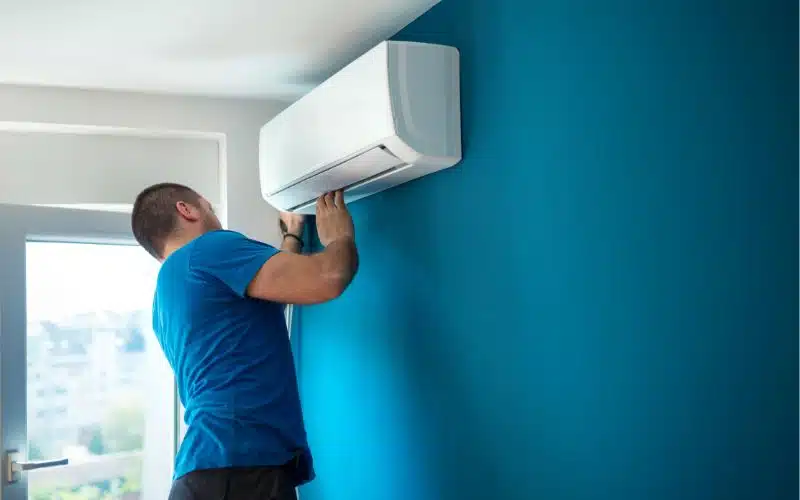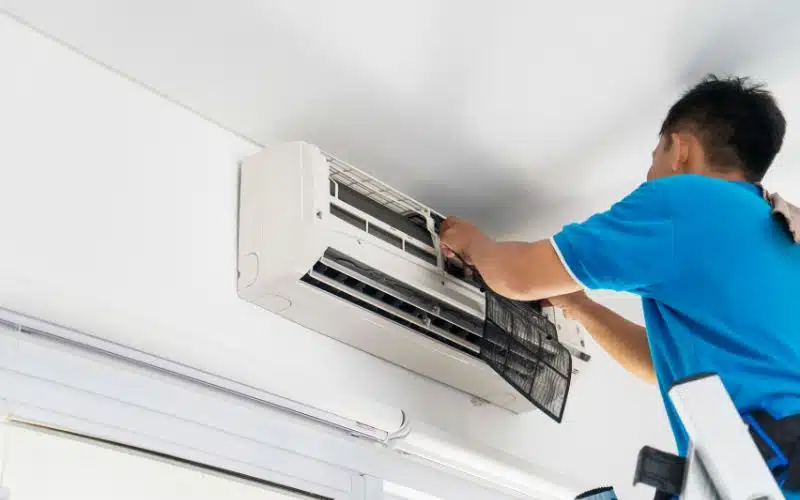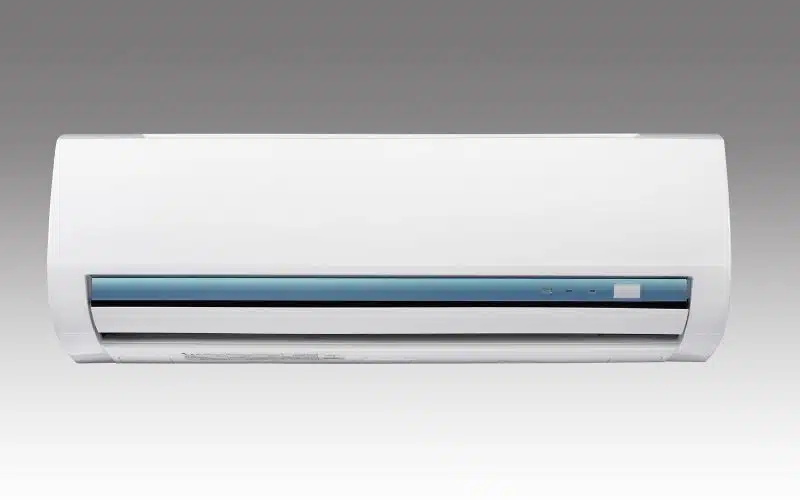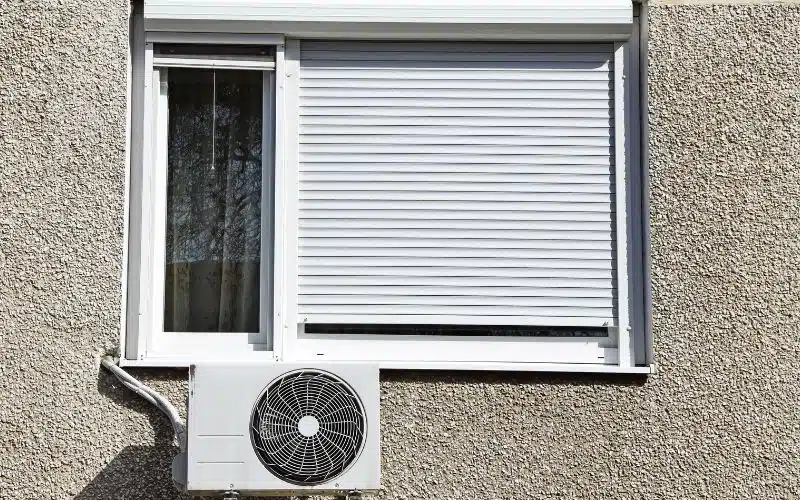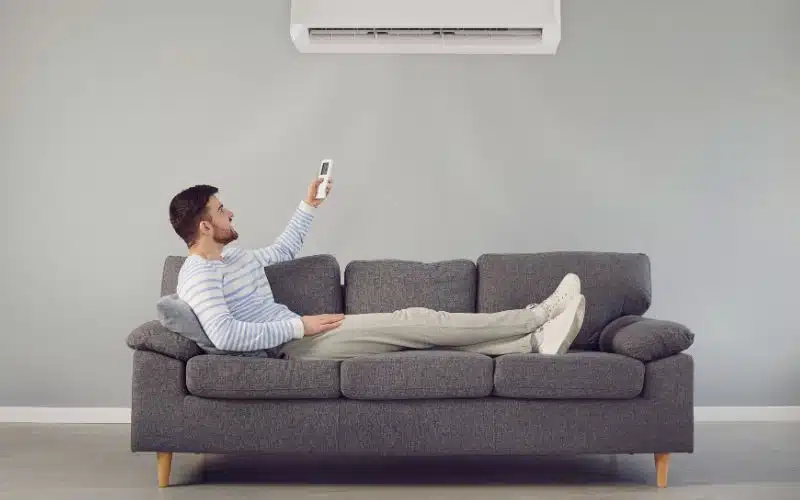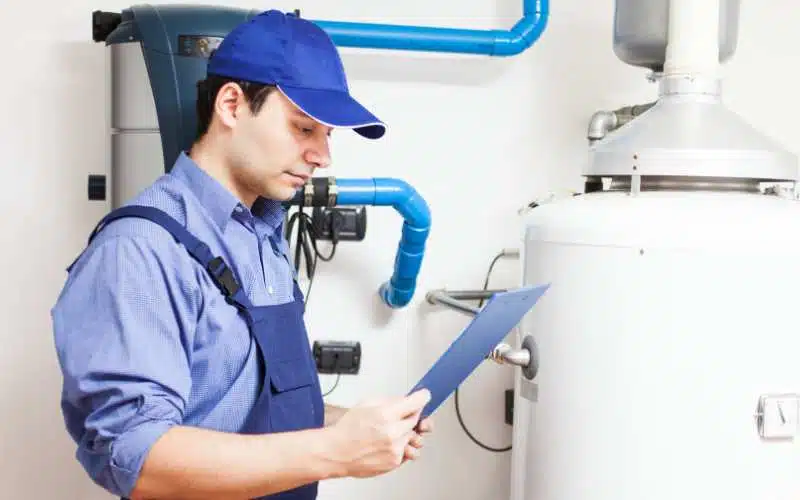The cycle of using an air conditioner doesn’t end when it cools or heats a room. During every cycle, the unit produces condensate that exits through the drain line.
The air conditioning condensate is simply a product of the unit pulling moisture out of the air. That is more pronounced during summer than in other seasons due to humidity.
The drain is usually an opening, so air from outside may create a negative pressure inside the drain.
That will force the condensate away from the condensate drain pan to find another exit point.
That is problematic because the condensate will flow through any available hole. So, water leaks around your air conditioner enter the fray.
Using a P-Trap on the condensate drain prevents a build-up of air conditioning condensate. The P-Trap corrects negative pressure in the drain, so the condensate flows correctly. That happens due to an airlock in the drain line, which nulls the action of air pressure. Thus, negative air pressure can’t push the condensate back up the drain.
Is It Required to Have a Plumbing Trap On a Condensate Line That Runs Outside?

A plumbing trap is not necessary for all outside condensate lines. But some manufacturers suggest a plumbing trap to boost energy efficiency.
But a plumbing trap is more or less mandatory for sanitary sewers. Yet, with HVAC condensate drains, people leave the use down to preference.
Yet, a plumbing trap can improve the state of a condensate line in many ways.
For one, the issue of condensate leaking close to the drain. It’s barely a topic for discussion when using a plumbing trap on a condensate drain.
The trap ensures the condensate passes through the condensate drain pan without obstruction.
Unfortunately, air pressure is usually the first obstacle the condensate has to clear on the way out. The negative air pressure outside the house pushes the condensate up the drain.
When the condensate gets pushed back up the drain, it looks for any nearby hole to escape. That leads to leakages around the air conditioner or the HVAC condensate drain.
But a plumbing trap nullifies the negative pressure in the drain. That makes it possible for the condensate to flow down the drain without hitches.
Besides averting condensate leaks, the plumbing trap also protects the drain. Since the drain is usually an open hole, dirt and insects from the house can make their way up.
But that isn’t possible with a plumbing trap attached to the condensate drain. So, you can also count on the absence of any clogs in the drain line.
That would mean fewer cleaning routines as well. Maintenance is easy.
Why P-Trap for Condensate Drain?
The P-Trap is perfect for checkmating condensate build-up in an air conditioning system. Without a condensate trap, the drain pan suffers a high airflow velocity.
That’s because there’s no suction on the hole to draw the condensate out. In that case, the condensate builds up while the air conditioner runs.
Then when the air conditioner is off, the remaining build-up leaks out of the system.
The P-Trap is crucial for air conditioners that have 3-ton ratings and above. That is because bigger air conditioning units suck out more humidity from the air.
So, they’ll have more condensate loads than smaller units. The condensate build-up in the air conditioners threatens the unit and the house.
You don’t want to put structures at risk even with the benefits of an air conditioner. The condensate, not correctly drained, will threaten the integrity of any structure.
But you can avoid such a scenario with an efficient condensate drain. The P-Trap can make condensate drainage from the air conditioner seamless.
The condensate drain naturally has negative pressure. So, it’ll pull air up back into the air conditioning unit. But, of course, the condensate will never exit the unit that way.
But when you install a P-Trap, it helps to drain water out of the air conditioner evaporator. So, overall, the P-Trap corrects negative pressure in the condensate drain.
One crucial point is that the P-Trap must always have water at its bottom. If there’s no water, the P-Trap is as good as any other pipe on the evaporator.
It won’t suck out any condensate from the air conditioner. The water that sits at the bottom of the P-Trap is what reverses the negative pressure.
It then allows the condensate to drain through the condensate drain pan.
Is P-Trap Needed If Condensate Pump Well Is Used Instead?
Using a P-Trap with a condensate pump well depends on the pipe’s position on the water line. It’s only necessary to add a P-Trap when the pipe doesn’t extend below the water line.
The well of the condensate pump already serves as a trap to drain the condensate. So, if you add a P-Trap to the setup, you can have issues with how the condensate drains.
The line entering the pump well should end above the water line. That is so that there won’t be a two-way tussle for the condensate.
The P-Trap and the condensate pump will both try to drag the condensate. An incorrect installation of the P-Trap will also cause a pressure imbalance.
Then, the condensate won’t drain properly. Also, a pressure imbalance will add weight to energy bills. That is because it causes a waste of energy in the air conditioning unit.
There should always be a vent between the condensate pump well and P-Trap. Ensure there’s a Vent-T on the tail end of the P-Trap.
That is the correct position for the vent. If you put it the other way round, that’ll make the P-Trap irrelevant.
The Vent-T on the front end of the P-Trap makes the pressure escape from the trap. Thus, the P-Trap will lack the suction to convey the condensate through the drain pan.
What Is the Proper Way to Plumb an AC Condensate Drain?
During installation, instruction manuals usually require P-Traps for air handlers with negative pressure.
Also, city plumbing codes recommend using P-Traps on all applications (horizontal or vertical). But all air conditioning units seem to lack a condensate drain trap.
That is especially a problem because you don’t want condensate build-up at all costs.
The proper way to plumb an AC condensate drain is with a condensate drain trap. The P-Trap is the standard for the HVAC industry since it fits most applications.
The P-Trap design depends on whether the drain pan has positive or negative pressure. That determines the position of the vent on the trap and other joints.
Also, you should ensure two plumbing codes for drain traps;
- Ensure to install the condensate drain trap according to instructions in the manual. Manufacturers usually give specifications for that.
- Ensure the drain lines have a 1/8 inch per foot slope toward the final drainage point. That ensures the condensate doesn’t lie still in the drain line.
The table below shows the essential elements of a good AC condensate drain line.
| Particulars | Description |
|---|---|
| The Condensate Drain Pan | It’s usually made of stainless steel and sits on a positive slope titled toward the drain outlet. |
| The Condensate Drain Pipe | The downward slope of the drain pipe is usually ¼ inch per foot facing the exit point. |
| The Condensate Drain Trap | The trap should have an excellent depth to store up enough water. The condensate won’t flow out properly without the water in the trap. |
| The Vent | The vent is essential for proper airflow in the trap. The lack of a vent can also make the water in the trap evaporate. |
Conclusion
A P-Trap is essential to an AC condensate drain. It ensures the proper flow of the air conditioning condensate through the pan.
That’s because a P-Trap forms an air seal, nulling negative pressure in the drain line. Not all city plumbing codes mandate P-Traps.
But experts advise them as essential features for AC condensate drains.
